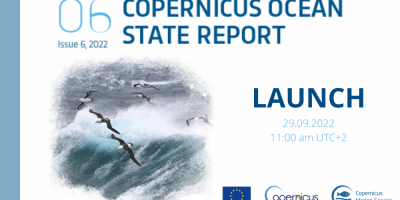By Laurie Henry
Images of climate change created at the University of Reading are now being shared around the world, providing a stark warning of how the planet is heating up. But with recent dire predictions of global warming, what can the past tell us about the future of our climate?
The United Nations Intergovernmental Panel on Climate Change (IPCC) report indicates that heat, droughts and floods will become more common and extreme. He also warned of the impact on the Arctic, which is warming twice as fast as the average rise for the rest of the planet.
“It is unequivocal that human influence has warmed the atmosphere, the ocean and the land,” write the authors. They add that “the crucial warming threshold of 2°C will be exceeded during the 21st century, without significant reductions in emissions in the decades to come”.
A stark visualization of global warming and the ‘climate action emblem’ created by the University of Reading was showcased, in 2021, at a climate change event, Green Horizon Perspectives, attended by political and financial leaders, co-organized by the City of London Corporation and the Green Finance Institute, and supported by the World Economic Forum.
Popular “warming stripes”
The “warming stripes” were created by Professor Ed Hawkins of the University of Reading in 2018. They clearly and vividly show how global average temperatures have increased over the past 150 years.
Each band represents the average temperature for a single year compared to the average temperature over the entire period. Shades of blue indicate cooler than average years, while reds indicate warmer than average years. The band of dark red stripes on the right side of the graphs shows how human action has contributed to global warming over time.
The stripes were downloaded over a million times in less than a week after they were first made available in 2019. They have become famous in recent years due to their simple yet striking design.
While the graphs for each country show the annual temperatures compared to the long-term average in that country, this combined version shows how the temperature changes for each country compare across the world.
The stripes are available to anyone with a social media profile by typing “#ShowYourStripes”. Not to mention the many schools that use the stripes to help students and parents understand the reality of our global warming.
Updated stripes show scale of climate crisis
In the spring of 2022, climate bands updated with the latest temperature data for over 200 countries were combined into a single mega-graph illustrating the impact of climate change across the globe.
The merged image, stacking the bands for almost every country in the world, is made up of around a billion pieces of data and provides the clearest picture yet of rising temperatures. It clearly shows which parts of the world are warming the fastest due to climate change, with regions like Europe in bright red.

Image of data compiled around the world. © Reading University / Ed Hawkins
Its release coincides with the release of the latest IPCC report, on the impacts of global warming, from melting ice caps to areas becoming too hot to live or farm.
Professor Hawkins said in a statement: “With each new report published on climate change, we become more certain that the consequences for the planet will be dire if we do not act.” He adds: “The latest IPCC report warns that we are rapidly passing the window of opportunity to avoid the most destructive impacts of climate change. It contains a clear message: Doing nothing is not an option.”
The Arctic is warming much faster than the rest of the globe
In recent decades, warming has been strongest in the Arctic. This phenomenon, known as Arctic amplification, is one of the most obvious manifestations of climate change. According to a study published in the scientific journal Communications Earth & Environment, the Arctic region has warmed at a rate four times faster than the rest of the world, over the past 43 years.
This ratio — the magnitude of Arctic amplification — is greater than has been generally reported in the literature and in the media. The warming has been even stronger at the local level: for example, in the Barents Sea region, it has been seven times greater than the global average.
In fact, recent climate modeling and observational data suggest that the magnitude of the phenomenon could be sufficient to significantly disrupt ocean circulation. This could lead to widespread changes in precipitation up to the Southern Hemisphere tropics, and profoundly alter the climate.
In conclusion, the climate emergency is undeniable. As COP 27 opens in Egypt, the latest data from the World Meteorological Organization reveals that the year 2022 could rank as the fifth or sixth hottest year on the planet.


